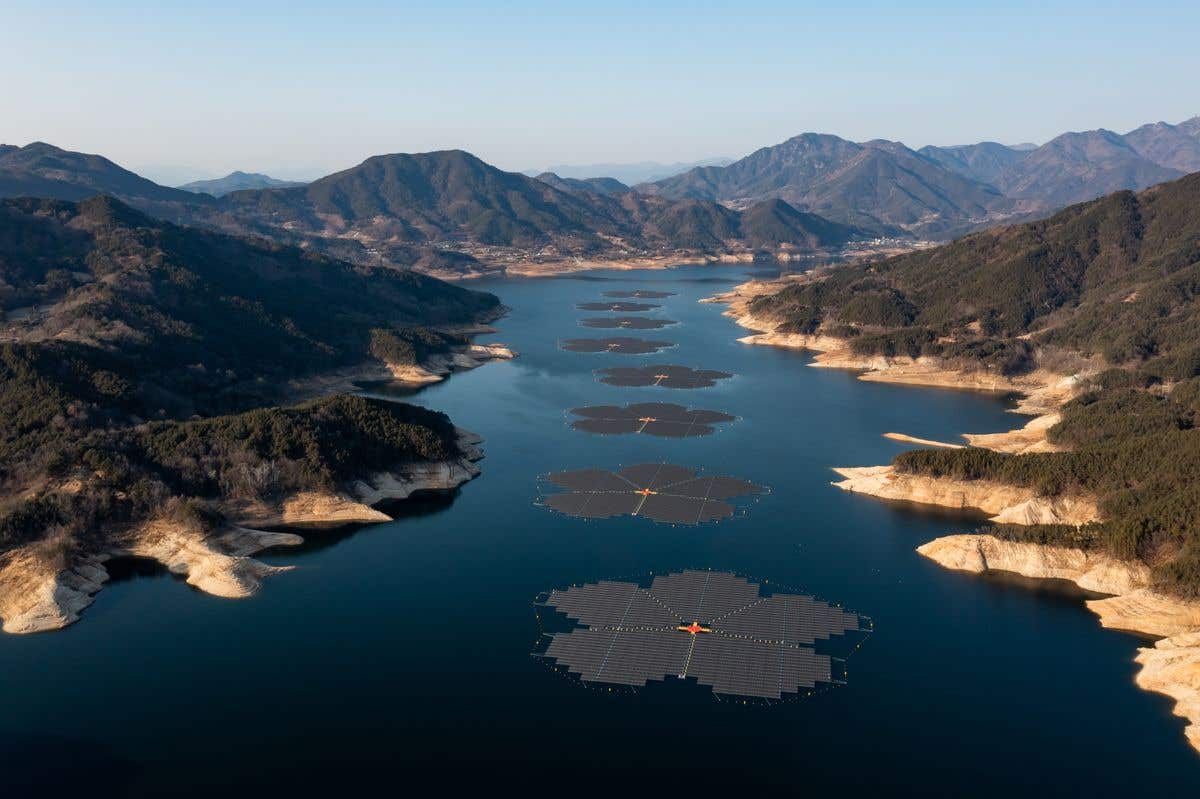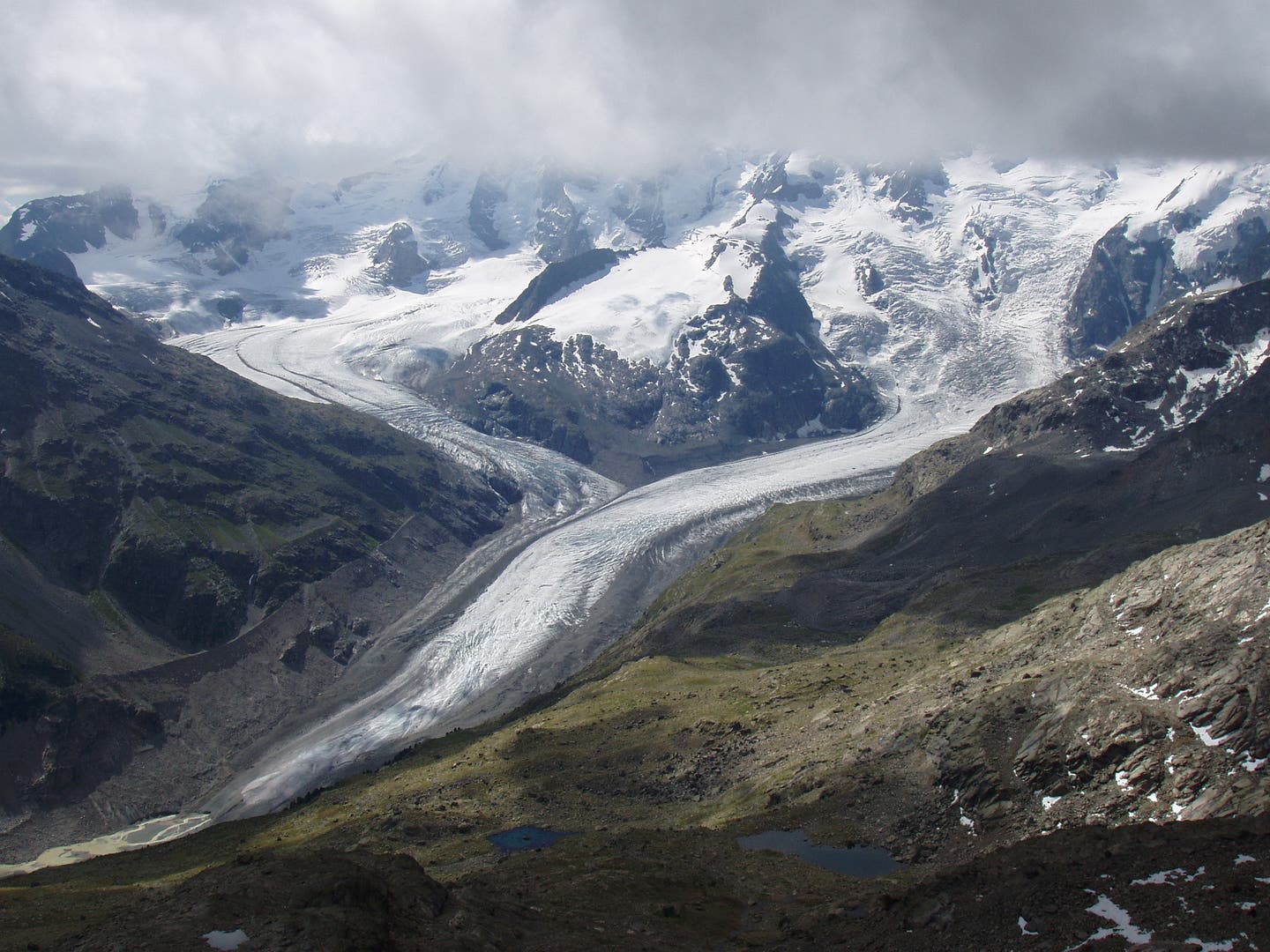Giant floating solar panel flowers provide clean energy to over 60,000 people
The solar project on the 17-mile-long reservoir in Hapcheon is able to generate 41.5 megawatts, enough to provide power for 60,000 people

[Mar 14, 2023: Staff Writer, The Brighter Side of News]
Floating solar panels on the surface of the Hapcheon Dam in South Korea. The project can generate enough to power 20,000 homes, according to Hanwha Solutions. (CREDIT: SeongJoon Cho)
South Korea’s total land surface is not large. Instead of clearing what little real estate there is for renewable energy projects, 92,000 solar panels in the shape of plum blossoms now float on the gently bobbing surface of Hapcheon Dam Reservour in South Gyeongsang Province's Hapcheon County.
The solar project on the 17-mile-long reservoir in Hapcheon is able to generate 41.5 megawatts, enough to provide power for 60,000 people—more than the total population of the county.
It’s one of the biggest floating solar plants in the world, and it’s in a nation that has been a laggard in adopting renewable energy, even though South Korea’s industrialized economy relies heavily on imported fossil fuels.
South Korea’s President Moon-Jaealso believes that floating solar can help his nation become carbon neutral by 2050 while adding 9.4 gigawatts, or the equivalent of nine nuclear reactors to it's energy grid.
Kim Jiseok, a climate and energy specialist at Greenpeace Korea, also believes that South Korea needs a massive amount of renewable energy to meet its climate target, and that floating solar can be a part of the solution.
Pairing PV solar panels to water sources like canals, ground-level humidity, or reservoirs increases their efficiency by as much as 10%, as the surrounding water helps them remain naturally cooler.
Related Stories:
Floating projects typically benefit from an easier connection to the power grid, either via an existing link from a hydro-electric plant, or because the reservoir is close to an urban area. Photovoltaic panels can also help restrict algae blooms, while the water helps keep panels cool in hot climates, increasing their efficiency.
They are costlier to build, though. Due to the need for floats, moorings and more resilient electrical components, floating systems are considered about 18% more expensive than land-based ones, according to the World Bank.
The Hapcheon Dam reservoir is now managed by state-run Korea Water Resources Corp. and when the floating power plant was proposed, local residents were given the chance to invest.
The panels are arranged in the shape of blossoms to make the site more visually appealing. (CREDIT: Scotra)
About 1,400 residents collectively have invested 3.1 billion won ($2.6 million), or about 4% of the total cost, expecting to receive a 10% annual return over 20 years. It was the community that requested the panels be arranged in the shape of blossoms to make the site more visually appealing.
The facility is the largest floating PV plant and was built with Q.Peak Duo Poseidon modules provided by South Korea-based manufacturer Hanwha Q-Cells and floating structures supplied by South Korean floating PV specialist Scotra. The arrays which are specially adapted for water, provide greater resistance to humidity and heat, according to the company.
Floating solar panels near Hapcheon Dam in South Gyeongsang Province's Hapcheon County with a 41 megawatt capacity started operating in November 2021. (CREDIT: the Ministry of Environment)
Scotra previously built a 25 MW floating solar plant on a reservoir in Goheung county, in the South Korean province of Jeollanam, and a 500 kW pilot floating array at the Hapcheon dam itself.
Shin Hyungseob, general manager at Hanwha Solutions, sees a huge potential in the global floating solar market as more countries adopt the technology. “We’re hoping to export the modules”, he said.
For more science news stories check out our New Innovations section at The Brighter Side of News.
Note: Materials provided above by The Brighter Side of News. Content may be edited for style and length.
Like these kind of feel good stories? Get the Brighter Side of News' newsletter.



